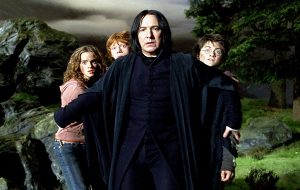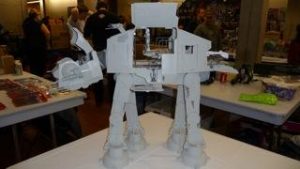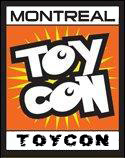There was the year someone brought a seven-foot-long submarine, complete with working torpedoes.
“Put it in the pool!” people yelled, so they did, and about 600 people crammed into the indoor pool at the high school to see the radiocontrolled sub prowl around. The one lifeguard on duty freaked out because there “were some crowd control issues,” organizer Didier Piette said.
“We never did that again.” Or the year someone brought their eight-foot-long, radio-controlled model jet, complete with miniature jet engine, that can propel the model plane at speeds up to 400 kilometres an hour.
“They ’re expensive,” Piette said. “Like $15,000 to $20,000. And that’s just for the engine. That doesn’t include the plane.”
They took it out to the parking lot just to hear it fire up.
“It sounds like an actual jet — it’s that loud,” Piette said. “There were like 1,000 people who came out to see it. It was on for 15 seconds — didn’t even fly.
“People are still talking about that.”
This weekend, for the 22nd year in a row, the Groupe Scouts 10e St Christophe de Laval will hold their biannual Quebec Hobby Show. It’s the largest in the province, taking up 26,000 square feet of floor space at the Georges-Vanier High School in Laval. It draws more than 600 presenters, and anywhere from 4,000 to 8,000 spectators over two days, who gawk at model train sets and try out slot-track car races or radio-controlled helicopters and dirt buggies. Multitudes of plastic models and die-cast miniature metal cars are on display.
Amateurs can get tips on anything from how to make realistic rocks on a mountain range to different ways to make a freight car look rusted out.
“I’d rather see my kids play with a model train on a piece of wood than sitting in front of a TV screen from morning to night,” said Piette, the show organizer. “When you’re pushing your thumb on a joystick, you’re not creating anything. When you’re building a house or a toy car, it’s working a lot more of your brain.”
The elites of the modelling world will be in attendance, displaying Napoleonic-era warships crafted entirely of wood, or, in the case of one Italian former navy man, a perfect likeness of the destroyer
he once served on; it took 2,000 hours to build.
Serious collectors can get in an hour early (for an extra $10) to find deals on limited edition trains or Matchbox cars — or whatever their passion is — that stores no longer stock. Locomotives that sell new for $150 can be had for as low as $80, with no tax, Piette said. They’re pre-owned, but tend to have lived a pampered existence. A large-scale model of a Union Pacific Big Boy steam engine sold for $2,700 a few years back.
Born as a novel way to raise money for scouting from parents tired of selling calendars or cookies, the fundraiser has grown from 90 display tables in 1996 to more than 600 today. Once a staple at Place Bonaventure in downtown Montreal, large-scale hobby shows were phased out in the early 1990s. Overshadowed by the video game culture and no longer the headliners in toy store displays, models and hobbies are having a harder time these days. Most of the crowd are men over 40. Items that move, like train sets and slot cars and remote-controlled vehicles, remain the crowd favourites.
Hope for resurgence comes in the number of fathers who are bringing their kids to see the Matchbox cars of their youth (which sold for 39 cents in the late 1960s and can fetch up to $300 today for one in mint condition), and the bendy orange plastic tracks kids use to race them in. Or the train sets, or slot-car race sets.
“It brings you back to your childhood — you see toys you haven’t seen in 40 years,” Piette said. “We see the father with their two young kids, and you look in his eyes and you know he’s happy because he convinced his wife to let him pay $200 on a slot-car starter kit.
“And you know it’s him who is going home to play with it.”








